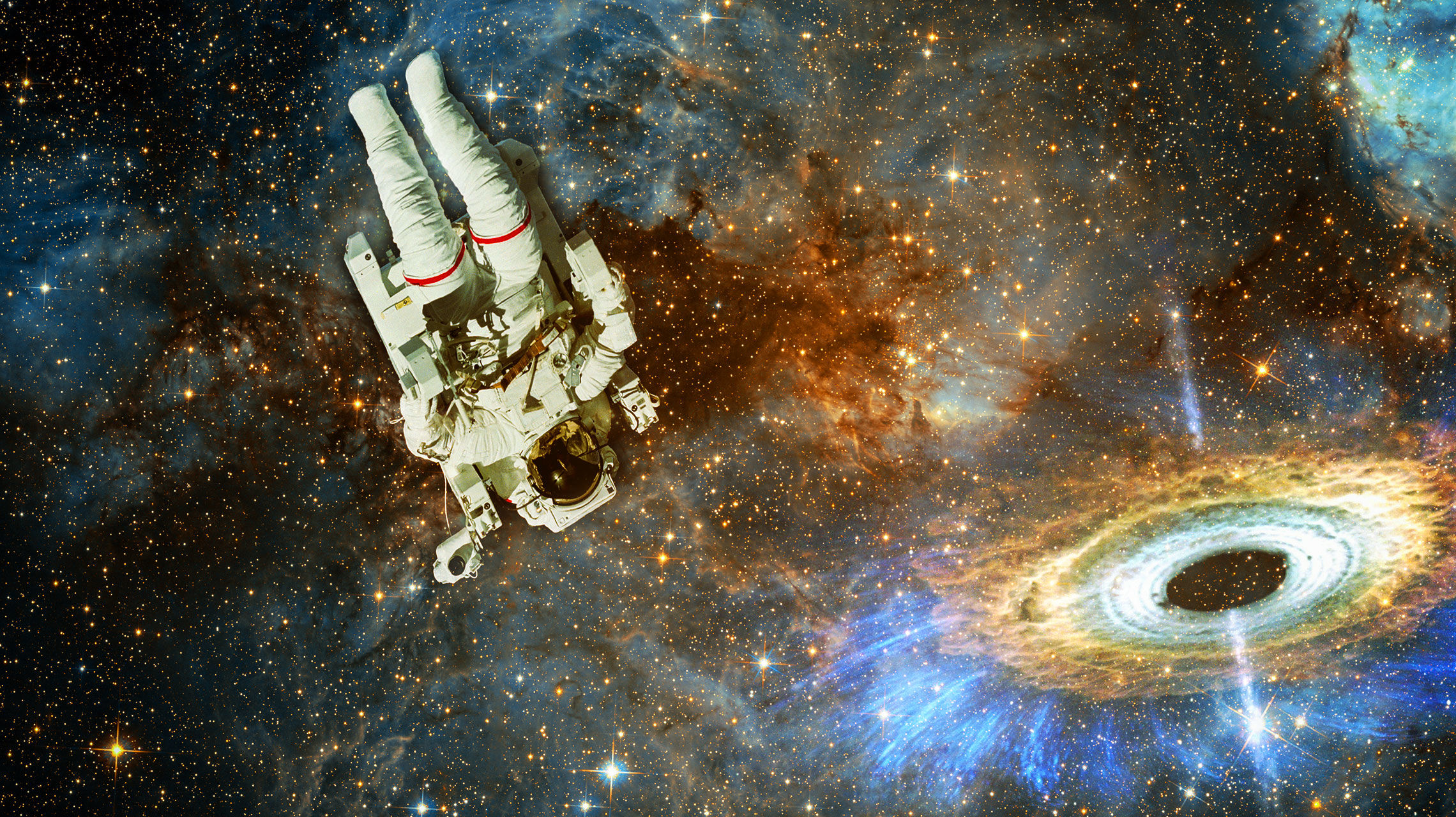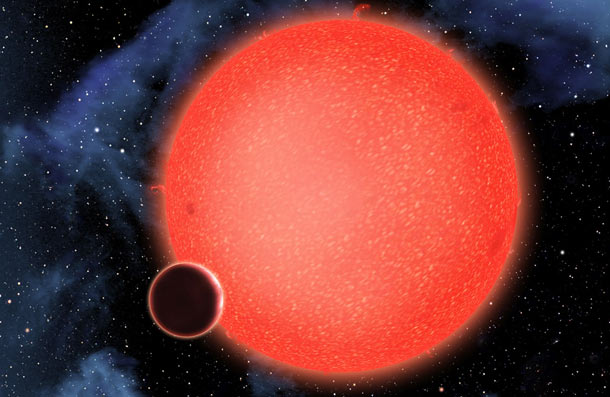Create a free profile to get unlimited access to exclusive videos, sweepstakes, and more!
Super-Earth exoplanet likely to be a waterworld

As we find more and more planets orbiting other stars, we keep finding ones that are weirder and weirder. Enter GJ 1214b: while much more massive than the Earth, it's apparently mostly water!
[Click to enhydronate this artists's illustration.]
The planet -- orbiting the star GJ 1214 at 40 light years from Earth -- was actually discovered in 2009 by the MEarth project, which is looking for Earth-like planets around, cool, dim red dwarf stars. This is fertile ground for the search: these stars are extremely common, making up something like 80% of the stars in the sky. Not only that, but because they are cool, a planet at the right temperature to have liquid water on the surface would have to be close to the star. That means its period is shorter, making it easier to find (you don't have to wait a long time for the effects of its orbit on the star to be seen).
In this case, though, it's not terribly Earthy! First off, it's massive, weighing in at
2.7 6.5 times our own planet's mass. It's also orbiting the star at a distance of a mere 2 million kilometers, giving it a temperature of something like 230° Celsius (450° F): hot enough to roast a chicken.But it apparently has something the Earth does: water, and lots of it. From our viewpoint, the planet passes directly in front of its star once every 38 hour orbit (this is called a transit). When it does, it blocks the star's light a little bit (which is how it was discovered). But the planet also has a thick atmosphere, and when it passes in front of the star, that atmosphere absorbs some of the starlight. As it happens, different things in the atmosphere absorb light differently. Water vapor, for example, has a different impact on a spectrum taken of the star's light than, say, carbon dioxide.
So by breaking the light up into lots of colors and carefully measuring it, it's possible to figure out what's in the planet's atmosphere. Earlier observations could tell that something was absorbing starlight, but they couldn't tell what. New Hubble observations (PDF) indicate that the best fit to the observations is: water. Haze, for example, absorbs more visible light than infrared, but that's not what was seen. The spectrum matches the way water absorbs light best, and in fact indicates the atmosphere may be as much as 50% water by mass!
Given the planet's size of about 35,000 km (22,000 miles), its density is quite low: about 2 grams per cubic centimeter. Compare that to Earth's density of 5.5 grams per cc! A rocky world more massive than Earth would most likely be denser than 2 grams/cc, so that's consistent with this planet having lots of water (which has a density of 1 gram/cc).
The scientists involved indicate this planet would be really weird. There may be exotic forms of water there, due to the high temperatures and pressure deep in the planet's atmosphere. Most likely the planet formed farther out from the star and migrated inward, a phenomenon that is apparently very common in planetary systems. I'll note other planets like this have been found, too, but not with such a high-precision spectrum and therefore such certainty.
I know that our solar system is pretty weird; we have all manners of strange things floating around in it. But there's nothing like seeing something so weird it makes us look positively normal by comparison. Sometimes we really do need a swift kick in the planets.
[P.S. My hearty congrats to Zach Berta, the lead author on the Hubble observations. I got to interview him for an Episode 2 of "Bad Universe", and he was very welcoming and fun to hang out with (and got an IMDB credit out of it). We talked quite a bit about GJ 1214b for the interview, and I'm glad to see this planet and its discoverer get some press!]
Image credit: NASA, ESA, and D. Aguilar (Harvard-Smithsonian Center for Astrophysics)
Related posts:
- Exoplanet in a triple star system smack dab in the habitable zone
- Motherlode of potential planets found: more than 1200 alien worlds!
- Another Kepler milestone: Astronomers find two Earth-sized planets orbiting the same star!
- Super Venus steampunk planet!



























